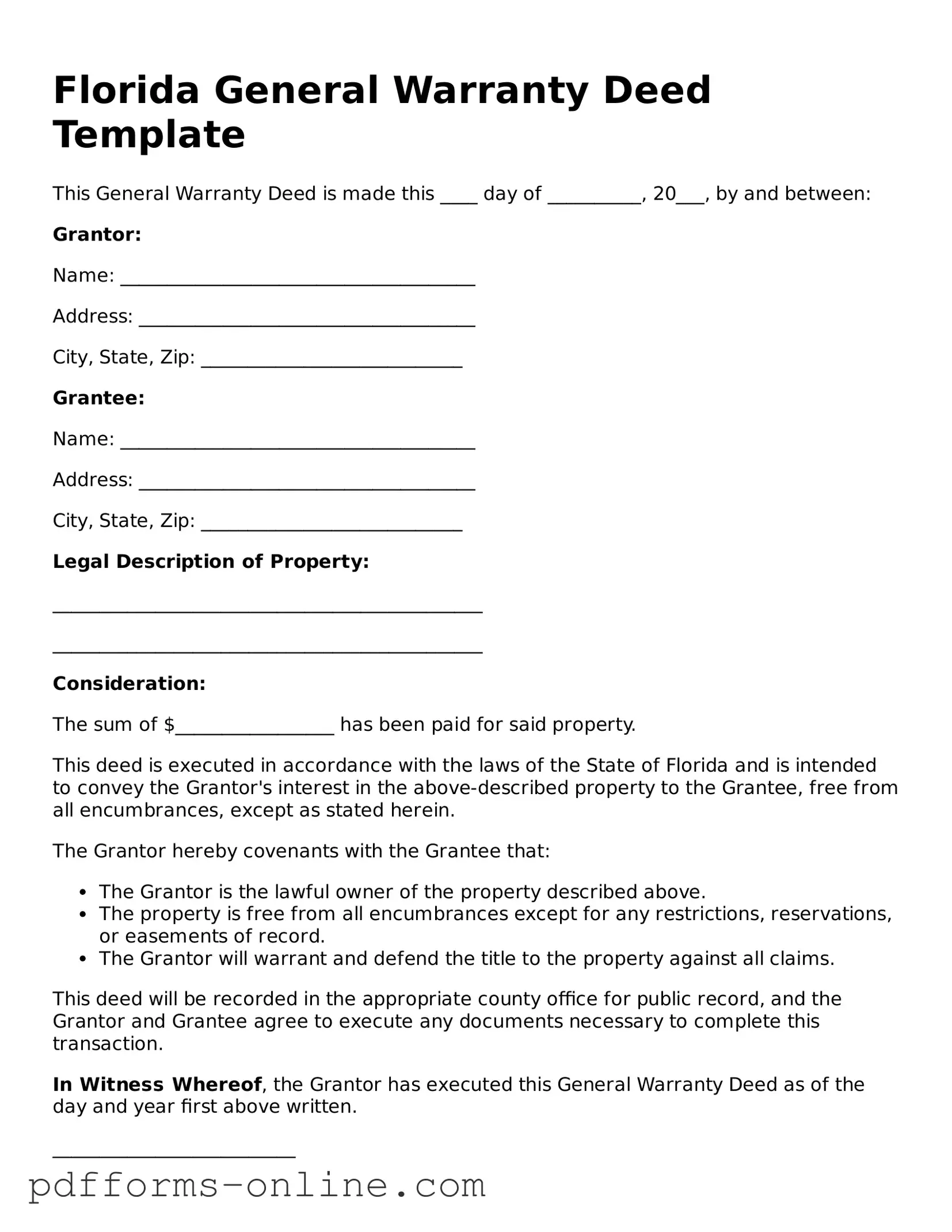Florida General Warranty Deed Template
This General Warranty Deed is made this ____ day of __________, 20___, by and between:
Grantor:
Name: ______________________________________
Address: ____________________________________
City, State, Zip: ____________________________
Grantee:
Name: ______________________________________
Address: ____________________________________
City, State, Zip: ____________________________
Legal Description of Property:
______________________________________________
______________________________________________
Consideration:
The sum of $_________________ has been paid for said property.
This deed is executed in accordance with the laws of the State of Florida and is intended to convey the Grantor's interest in the above-described property to the Grantee, free from all encumbrances, except as stated herein.
The Grantor hereby covenants with the Grantee that:
- The Grantor is the lawful owner of the property described above.
- The property is free from all encumbrances except for any restrictions, reservations, or easements of record.
- The Grantor will warrant and defend the title to the property against all claims.
This deed will be recorded in the appropriate county office for public record, and the Grantor and Grantee agree to execute any documents necessary to complete this transaction.
In Witness Whereof, the Grantor has executed this General Warranty Deed as of the day and year first above written.
__________________________
Grantor's Signature
__________________________
Grantee's Signature
Witnesses:
__________________________
Signature of Witness 1
Name: _____________________________________
__________________________
Signature of Witness 2
Name: _____________________________________
